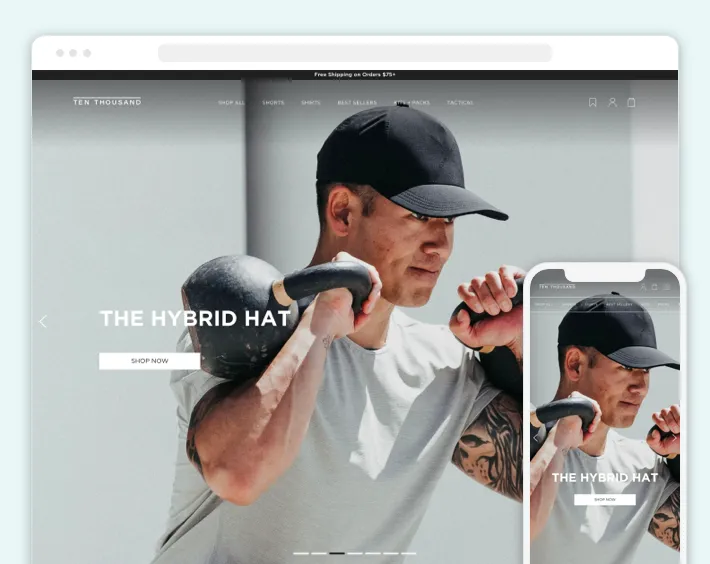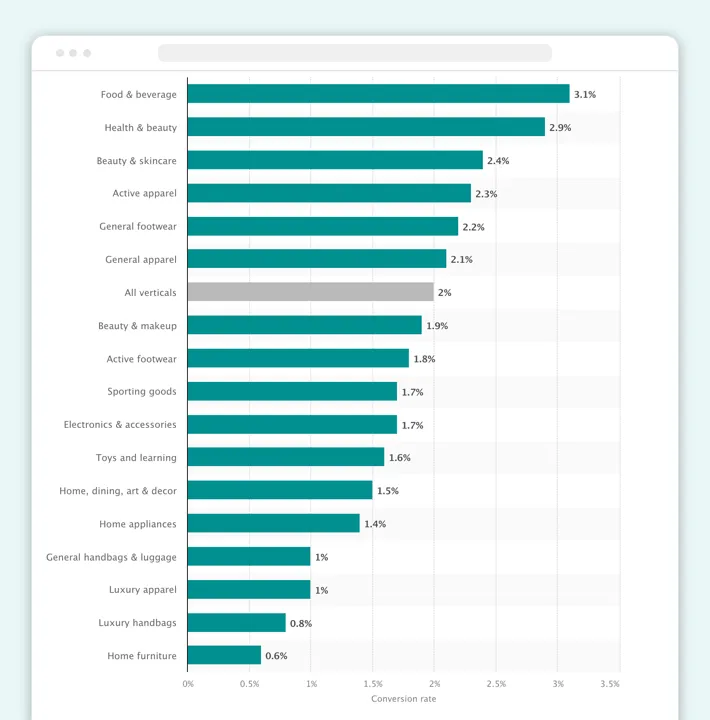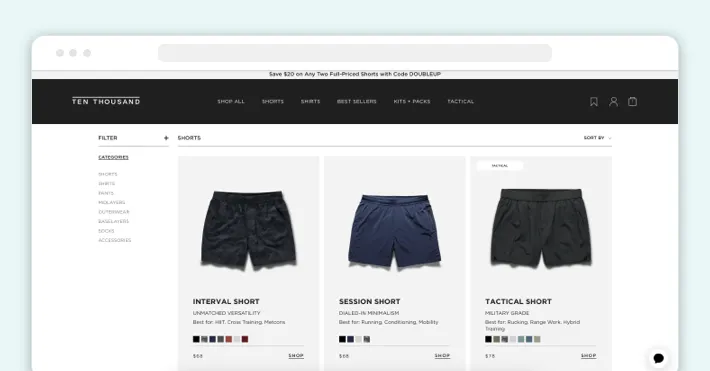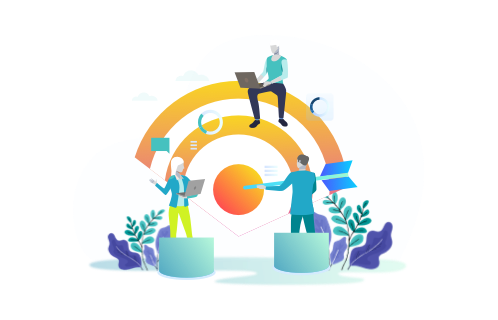The Shopify store is your virtual bustling market, where visitors come and go. The more of them become your loyal customers, making purchases and spreading the word about your products, the higher the Shopify conversion rate. But what’s this rate about?
A conversion happens when your website visitor takes the action you expect from them on your site. Subscribing to a newsletter, buying certain products, and reacting to specific offers are just a few examples of such actions. A good conversion rate is when you successfully get visitors to do what you want.
Factors like low-grade website design, slow loading times, poor product description, and others hinder your sales, customer loyalty, and the overall Shopify store’s success. And, of course, they lower your conversion rates. Want to tackle these issues? GenovaWebArt’s guide is your roadmap to eCommerce triumph. Leverage our profound Shopify expertise to avoid the top ten conversion rate killing mistakes.

Table of Contents
- The Impact of Poor Conversion Rates
- 10 Common Shopify Conversion Rate Mistakes
- Solutions and Best Practices for Higher Conversions
- Case Studies and Success Stories
- Measuring and Tracking Conversion Rate Improvements on Shopify
- GenovaWebArt as Your Shopify Performance and Conversion Optimization Partner
- Conclusion
- FAQ
The Impact of Poor Conversion Rates
Before we explore the most common Shopify conversion rate mistakes, let’s figure out why tackling them is crucial and discover the risks of not doing so. Here’s the devastating impact of low conversion rates:
- Lost sales. Low conversion means that many potential customers are slipping away. They may come to your store and even show interest in your products but never complete the desired action (like a purchase). Each lost customer is a lost sale that ultimately impacts your revenue.
- Reduced revenue. Following on from the previous point, losing sales equals lower profits. Your website may experience steady traffic. But your income will suffer if your visitors don’t convert into customers.
- Higher customer acquisition costs. Low conversion rates imply investing more resources in marketing and ads. That makes acquiring each new customer extremely expensive and influences your bottom line.
Most online calculations put the typical conversion rate between 1% and 2%, so anything over that is considered the best. In compliance with Shopify, when your eCommerce conversion rate is more than 3.3%, it's among the best 20% of the highest-converting Shopify stores around the world.
Let’s now look at some stats that prove the importance of a high Shopify conversion rate:
The average conversion rate among Shopify stores is 1.3%, as per Littledata. Surpassing 3.2% will put you among the top 20% of stores, and exceeding 4.8% would position you in the top 10%.
Conversion rates vary by industry. So don’t despair if you only have 1%. This level is typical, for example, for luxury apparel. Look at the different conversion rates for various niches in the image below.

10 Common Shopify Conversion Rate Mistakes
Your online store visitors don’t turn into regular shoppers for many reasons. The good news is you can effortlessly avoid most mistakes that kill conversions in Shopify. For that, learn what to fight against first. Here are the top mistakes to watch out for.
1. Poor Website Design
The first impressions matter. And it’s even more crucial in eCommerce. A poorly designed store can instantly deter potential customers. Intricate navigation, inconsistent color schemes, and outdated and unattractive layouts all cause a higher Shopify bounce rate (when visitors leave your website without taking the desired actions).
To improve conversions, ensure your store is aesthetically pleasing, user-friendly, and intuitive. Luckily, the ready-made themes from the Shopify Theme Store come with those features.
2. Inadequate Product Descriptions
Imagine going to a physical store where products lack price tags and information about what you’re looking at. Sounds frustrating, right? The same applies to eCommerce.
Your customers want to know what they’re buying. And the more detailed the descriptions, the easier their shopping journey. To create product descriptions that sell, consider the following:
- Make product descriptions precise and straightforward.
- Avoid novel-length product descriptions.
- Ensure your product descriptions reflect your brand essence.
On top of that, make sure to convey your offerings’ value and benefits when describing them.
3. Lack of Trust Signals
Trust is crucial in online shopping. Underestimating its importance is one of the most common and damaging Shopify conversion rate mistakes.
Your website visitors need to be sure their personal information is safe. Also, they want to know that your products are as good as they appear in your store. To avoid leaving your customers skeptical and hesitant, implement the following trust signals:
- Customer reviews
- Testimonials
- Social media feedback
- User-generated content
- Security badges
- Transparent return policy
Incorporating the above elements will increase your conversions, customer loyalty, and your store’s credibility.
4. Slow Loading Times
Shoppers are no longer willing to wait for your Shopify store to load. Slow-loading pages quickly frustrate visitors, driving them away. According to Portent, 1-second load websites offer three times higher conversion rates than those loading for 5 seconds.
To make your online store load faster, leverage the following tactics:
- Use optimized image file formats (like WebP) and compress images without compromising quality.
- Install only the most necessary apps and plugins.
- Optimize Shopify for mobile devices.
- Select a fast and well-suited Shopify theme.
5. Ignoring Mobile Optimization
Neglecting mobile users is a huge mistake. With mobile eCommerce sales accounting for 60% of all global eCommerce sales, mobile optimization is not just a trend but a necessity. Fortunately, Shopify provides mobile-friendly themes for online stores. It removes the hassle of optimizing your website through custom design and development.
6. Not Utilizing A/B Testing
Staying in the dark about what works and what doesn’t is unacceptable in eCommerce. It potentially leads to a lower conversion rate on Shopify and a poor user experience.
A/B testing is your tool for making your site as convenient for visitors as possible. Experiment with different website variants and improve your store based on actual user feedback.
7. No Personalization
Shoppers expect tailored experiences from your Shopify store. It’s evident in the State of Personalization Report 2023, where 56% of consumers stated they plan to become repeat customers after a personalized interaction with a brand.

To offer personalization, consider the following:
- Leverage personalized product recommendations.
- Use customers’ names in emails.
- Suggest tailored content.
- Offer exclusive discounts.
8. No Live Chat
Picture this: you’re in a physical store, looking for purchase assistance. But no one is available to help. The same happens to your customers when they browse your Shopify website and don’t find the live chat.
Thus, neglecting live chat support is another conversion-impacting mistake you’d better avoid. You need this feature to offer timely assistance with checkout, product selection, and other problems or questions your customers might face.
9. Wrong Timing of Popups
Remember those old-school eCommerce stores or websites that bombarded you with popups every step of the way? You don’t want your Shopify site to be like that. Excessive or untimely use of popups frustrates visitors and makes them never return to your store.
Ensure popups display at the right moment in the customer’s journey (for instance, when scrolling down your website or trying to exit it) to improve your conversions.
10. Non-Engaging CTAs
CTAs, or call-to-action buttons, prompt your visitors to take the desired action on your Shopify website. Therefore, these tools directly influence the conversion rate.
Ensure your CTAs aren’t dull, confusing, or uninspiring. Create clear, concise, and sales-oriented buttons, encouraging customers to click on them.
Solutions and Best Practices for Higher Conversions
Now, let’s recap the possible solutions to the above Shopify conversion rate mistakes. Leverage the following tips:
- Choose a fast, responsive, and mobile-friendly Shopify theme. Ensure it’s consistent and uncluttered.
- Create detailed and persuasive product descriptions.
- Display customer reviews and other trust signals to establish credibility.
- Optimize your website’s content and pages for fast loading.
- Ensure your online store works appropriately on different devices.
- Embrace A/B testing to compare various website elements and choose the most converting ones.
- Leverage tailored recommendations and special offers to personalize the shopping experience.
- Enable live chat within your Shopify store.
- Display popups only when relevant.
- Create compelling CTAs and put them in the right places on your website.
Case Studies and Success Stories
Numerous stores face specific conversion rate issues at some point in their journeys. Fortunately, practical solutions exist to fix those problems. Here are some real-life examples:
MìLà: Brand-New Website Design

Our client, a Chinese food brand, needed a complete rebranding. They strived to adopt a more modern identity and, eventually, convert more customers. GenovaWebArt experts undertook this task and transferred the previously called TheXCJ to a new MìLà domain. We also handled a full website redesign, implementing a fresh color scheme, fonts, and landing pages.
Winky Lux: Redesign and Personalization

Winky Lux, a beauty brand, is another GenowaWebArt client that requested improvements to their store. Apart from a complete Shopify theme redesign, we had to deliver personalization features for boosted conversions. That’s how we came up with a “Skincare Quiz” functionality. With its help, customers select cosmetic products based on their skin type, age, and other parameters.
Ten Thousand: A/B Testing

Ten Thousand, a reputable sportswear brand, needed Shopify Plus design and development expertise. They also required enhancements to improve their Shopify conversion rate. To achieve this, GenovaWebArt handled a comprehensive A/B testing of design elements and delivered a polished online store layout.
Measuring and Tracking Conversion Rate Improvements on Shopify
Now, you know that conversion rate improvements are possible from real-world examples. Let’s look at how to measure the efficiency of the implemented changes.
First, learn how to calculate the conversion rate. Divide the number of conversions (desired actions taken) by the total website visitors. Then, multiply by 100 to get a percentage.
Other KPIs prove the conversion rate progress. Here they are:
- Average order value (AOV) — measures the average amount each customer spends. Increasing this value boosts your revenue without attracting more traffic.
- Clickthrough rate (CTR) — measures the effectiveness of your CTAs, links, and banners. A high CTR means your calls to action function as expected.
- Bounce rate — measures the percentage of visitors who leave your site after viewing only one page. A lower bounce rate means visitors consider your store engaging.
- Shopping cart abandonment rate — measures how many visitors add items to their carts but never complete the purchase. Reducing this rate improves conversion.
Use these tools to track your conversion rate on Shopify:
- Google Analytics
- Shopify built-in analytics
- Optimizely or Google Optimize
- Hotjar
GenovaWebArt as Your Shopify Performance and Conversion Optimization Partner
You no longer need to navigate your conversion rate alone. GenovaWebArt will promote Shopify store and help you attract more loyal customers. Our agency has been improving Shopify websites since 2012 – and we’re ready to enhance yours, too.
Our comprehensive services encompass the following:
- Shopify theme development and customization
- Shopify app development
- Shopify design
- Shopify Plus design and development
- Complex Shopify solutions development from scratch
- Migration to Shopify
- And even more in between
All our services aim at Shopify conversion rate optimization. Whether it requires implementing a customer review system, improving website design, or creating custom functionalities for personalization, our team can move your online store to new heights. Witness it firsthand in our portfolio.
Conclusion
Shopify conversion rate optimization is your chance to achieve sustained eCommerce success. This way, you generate more sales and attract a loyal customer base around your online store.
If you need improvements to your Shopify website or seek conversion rate advice, count on GenovaWebArt specialists. Leveraging our decade-long experience in delivering Shopify solutions, our team guarantees the best possible results. Contact us to discuss your store enhancements in depth.



![Shopify Sales Channels [Complete Guide] - GenovaWebArt blog article, banner image Shopify Sales Channels [Complete Guide] - GenovaWebArt blog article, banner image](https://genovawebart.com/hubfs/img/webp/hero-banner-blog-article-shopify-sales-channels.webp)



